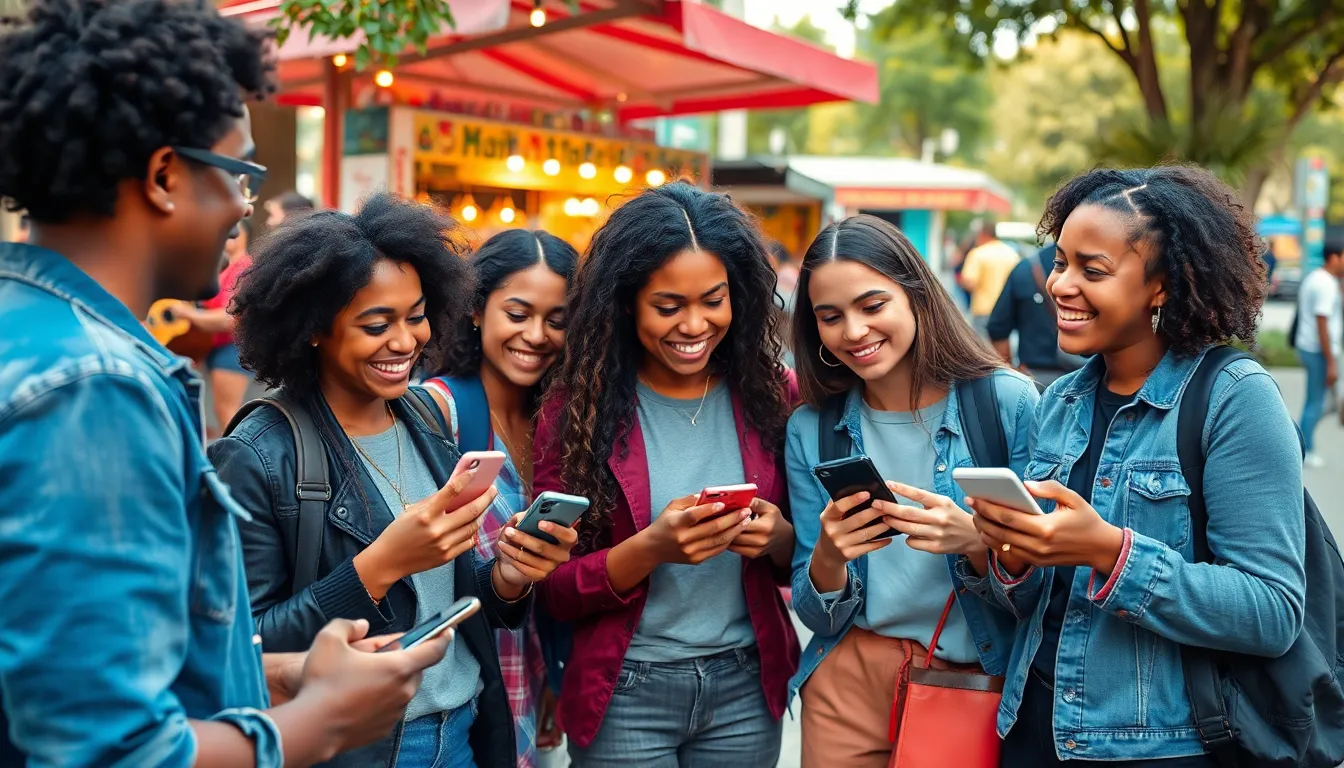Table of Contents
ToggleIn an increasingly interconnected world, the influence of global culture is more profound than ever. From music and art to fashion and cuisine, cultural exchanges shape identities and foster understanding across borders. As people embrace diverse traditions, they create a rich tapestry of shared experiences that transcends geographical boundaries.
The impact of global culture isn’t just about appreciation; it also drives social change and innovation. By exploring how various cultures interact and evolve, one can uncover the ways they challenge norms and inspire new perspectives. This article delves into the dynamics of global cultural impact, highlighting its significance in today’s society and its potential to unite humanity in a shared narrative.
Understanding Global Cultural Impact
Global cultural impact refers to the influences and exchanges that shape societies worldwide, driven by interconnectedness and shared experiences. This impact manifests in various forms, including art, music, fashion, and cuisine, affecting identities and fostering understanding.
Definition and Scope
Global cultural impact encompasses the ways cultures interact, influence, and merge with one another. It involves the exchange of ideas, traditions, and practices across borders. This impact extends to areas like global communication, media, and technology, which amplify cultural reach. The scope of global cultural impact includes:
- Music: Globalization enables music genres to blend, leading to innovative sounds and cross-cultural collaborations.
- Art: Diverse artistic expressions reflect shared human experiences and social themes that resonate internationally.
- Fashion: International fashion trends evolve as designers draw inspiration from varied cultural elements.
- Cuisine: Culinary practices fuse ingredients and techniques from different regions, creating unique dining experiences.
Historical Context
- Colonialism: Cultural interactions, often forced, significantly altered local traditions while introducing new influences.
- The Silk Road: This ancient trade route facilitated the exchange of ideas, art, and technology between East and West.
- The Internet Era: The rise of digital technology has created platforms for worldwide cultural sharing, transforming how individuals and communities engage with diverse cultures.
Factors Influencing Global Cultural Impact

Several critical factors influence the dynamics of global cultural impact, reshaping identities and fostering connections across societies.
Technology and Social Media
Technology and social media play pivotal roles in shaping cultural exchanges. Platforms like Instagram and TikTok allow users to share music, art, and fashion effortlessly. These platforms enable real-time interaction, amplifying trends and broadening cultural access. Global audiences can discover diverse artistic expressions and engage with content directly from creators. As a result, local cultures gain visibility on an international scale, fostering appreciation and understanding across borders. Research indicates that social media accelerates the diffusion of cultural practices, contributing to the normalization of cultural diversity in everyday life.
Migration and Globalization
Migration and globalization significantly impact cultural landscapes worldwide. When people move to new countries, they bring their cultural practices, which often blend with local traditions. This fusion creates hybrid cultural forms that propel societal change. For example, culinary arts showcase how migrant communities introduce global flavors and techniques, transforming local cuisines. Globalization further facilitates this exchange by enhancing economic ties and international collaboration, enabling cultural products, such as films and music, to reach wider audiences. Statistics reveal that international migration has doubled since 1990, establishing a more interconnected world where cultural influence thrives.
Positive Aspects of Global Cultural Impact
Global cultural impact fosters significant benefits, enhancing interpersonal connections and driving economic growth. Cultural exchange contributes to diversity and innovation, while various industries thrive on these interactions.
Cultural Exchange and Diversity
Cultural exchange enhances diversity by promoting an understanding of different traditions and customs. Exposure to diverse art forms, music styles, and culinary practices enriches local cultures. For instance, international festivals showcase traditional dances and cuisines from various countries, encouraging participation and appreciation. This exchange fosters tolerance, creating communities that celebrate differences and promote inclusivity. Furthermore, such interactions inspire artists and creators to innovate, leading to new forms of artistic expression that blend cultural elements.
Economic Growth through Cultural Industries
Cultural industries play a critical role in driving economic growth on a global scale. The creative sector, including fashion, film, and music, generates significant revenue and job opportunities. In 2019, the global creative industry contributed approximately $2.25 trillion to the economy, according to UNESCO. Cities renowned for cultural events, like music festivals or art exhibitions, attract tourists who boost local economies. Additionally, the fusion of cultural practices creates unique products that capture consumers’ interest, driving demand and enhancing global trade. The investment in cultural industries fosters innovation and entrepreneurship, creating a sustainable economic model that thrives on cultural richness and diversity.
Challenges and Criticisms of Global Cultural Impact
Global cultural impact raises significant challenges and criticisms. While it fosters interconnectedness, it also risks undermining local traditions and identities.
Cultural Homogenization
Cultural homogenization refers to the process where distinct cultural identities blend into a singular global culture. Globalization often promotes dominant cultures, particularly through media and consumer products. Cultural products such as fast food and popular films can overshadow local traditions, leading to a loss of unique cultural expressions. For instance, McDonald’s and Coca-Cola dominate fast food markets worldwide, compelling local eateries to adapt or struggle. Critics argue that this trend erodes cultural diversity and diminishes the richness of local experiences. Studies indicate that over 80% of the world’s cultural diversity could face decline due to homogenization, making this a pressing concern.
Loss of Indigenous Cultures
The loss of indigenous cultures stands as a critical challenge linked to global cultural impact. As global influences permeate local societies, traditional practices, languages, and customs might disappear. In many regions, colonization and globalization have led to the marginalization of indigenous voices. For example, 90% of the world’s languages could vanish by the end of the 21st century without concerted efforts for preservation. Indigenous communities often struggle to maintain their cultural heritage in the face of overwhelming external pressures. Critics contend that this loss not only affects human diversity but also impacts global understanding of ecological and cultural perspectives inherent in indigenous knowledge systems.
Case Studies of Global Cultural Impact
Global cultural impact is evident in various spheres, particularly in music, entertainment, and culinary traditions. These examples illustrate how cultural exchanges enhance global interconnectedness.
Music and Entertainment
Global music genres blend unique elements, producing new styles and expanding audiences. Hip-hop, originating in the Bronx, has become a worldwide phenomenon, influencing local artists across Asia and Africa. K-pop, a South Korean music genre, exemplifies this fusion, merging pop, rock, and R&B elements, leading to a massive international following. Streaming platforms like Spotify and Apple Music facilitate immediate access to diverse music, allowing global audiences to discover and appreciate various cultural sounds. Notably, in 2020, the consumption of global music streams reached over 1 trillion, underscoring the trend towards cultural convergence.
Film also demonstrates global cultural impact. Hollywood frequently adapts international stories, broadening themes and perspectives. Bollywood films, with their unique dance numbers and rich storytelling, have attracted significant attention in Western markets. International film festivals showcase diverse filmmakers, increasing awareness and appreciation of different cultures, as seen at events like Cannes and Sundance. In 2021, the global box office revenue for foreign films grew by 28%, highlighting the rising interest in cross-cultural storytelling.
Culinary Traditions
Culinary practices offer another example of global cultural impact, as food serves as a primary means of cultural expression. Fusion cuisine blends ingredients and techniques from varied cultures, creating innovative dishes. Sushi, originally a Japanese delicacy, now features in restaurants worldwide, reflecting a broader appreciation for global flavors. The rise of food trucks and international cuisine festivals promotes cultural exchange, allowing people to experience diverse culinary traditions in their local communities.
Social media platforms like Instagram generate buzz around food trends, encouraging restaurants to experiment. The ‘foodie’ culture emphasizes sharing experiences and recipes online, leading to the popularization of dishes such as ramen burgers and Korean tacos. In 2019, the global food services market generated approximately $3.5 trillion, highlighting the economic significance of culinary diversity.
Local culinary traditions also receive international attention through cultural festivals, promoting traditional cooking methods and fostering community connections. Events like the World Food Festival celebrate diverse culinary heritages, encouraging cross-cultural dialogue and appreciation.
The global cultural impact shapes societies in profound ways. As cultural exchanges continue to thrive, they foster understanding and appreciation across diverse communities. This interconnectedness not only enriches individual identities but also drives social change and innovation.
While challenges such as cultural homogenization and the loss of unique traditions persist, the benefits of cultural exchange are undeniable. Enhanced interpersonal connections and economic growth emerge from these shared experiences. The ongoing dialogue between cultures promises to create a more inclusive world, where diversity is celebrated and innovation flourishes. Through this lens, global culture remains a vital force in uniting humanity and inspiring future generations.







